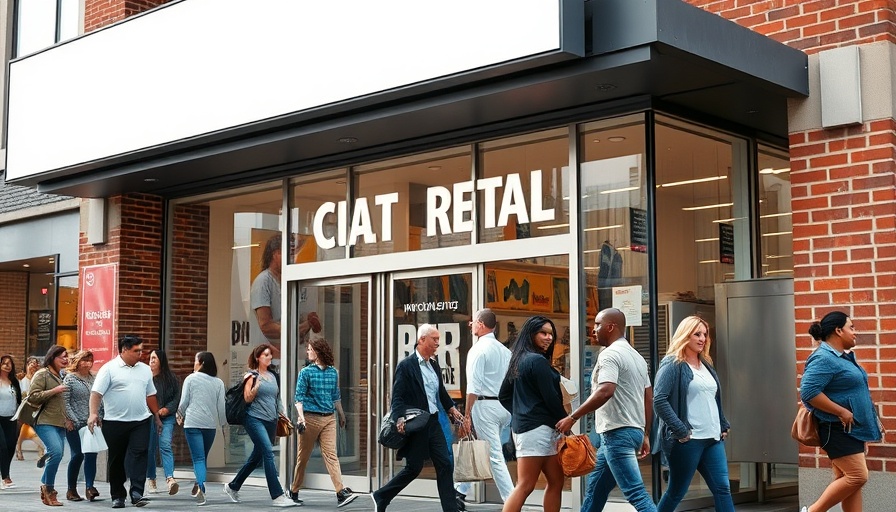
Kohl's Store Closures: The Bigger Picture of Retail Downturn
In a move reflecting the challenges facing the retail sector, Kohl’s has confirmed the closure of 27 underperforming stores across 15 states. This decision aligns with a broader trend affecting major brick-and-mortar retailers like Macy’s and Rite Aid, as economic pressures force companies to reassess their operations. As e-commerce consumption rises, retailers must expertly navigate this landscape or face dire consequences.
Understanding the Factors Behind Store Closures
Kohl's is not alone in its struggles; analysts predict an alarming surge in retail closures, estimating a staggering 15,000 stores nationwide shuttering in 2025, double the previous year's figures. Coresight Research highlights key drivers behind this crisis: inflation and a marked shift in consumer behavior favoring online shopping. The closures may signal a paradigm shift, highlighting how retailers must either adapt or risk extinction.
Insights from Kohl’s Management: Navigating Future Challenges
CEO Tom Kingsbury expressed the gravity of these closures, stating, “We always take these decisions very seriously... it is important that we also take difficult but necessary actions to support the health and future of our business.” This statement encapsulates the delicate balance executives must maintain between short-term shut downs and long-term growth strategies.
Impact on Employees and the Community
All employees in affected locations have been notified, being offered severance packages or opportunities for relocation within the company. Retail closures do not just affect profits; they create a ripple effect within communities where these stores operate. Jobs are lost, local economies suffer, and loyal customers are left searching for alternatives.
Alternatives in a Shrinking Marketplace
Shoppers will need to look for alternatives as Kohl’s exits certain markets. Retail giants like Target and Walmart are well-positioned to absorb some of this customer traffic, offering low prices along with a diversity of product options. Similarly, retailers like JCPenney and Macy’s continue to maintain their presence, despite their own challenges within the retail landscape.
Strategies for Savvy Shoppers During Liquidation
Those interested in capitalizing on Kohl's imminent store closures should prepare for significant liquidation sales, which can deliver substantial discounts. Shoppers might find everything from home goods to clothing marked down as retailers clear inventory, presenting an opportunity for value-seekers.
Forecast: The Future of Retail in an Evolving Landscape
The rise of e-commerce and changing consumer preferences are not trends that will simply fade; they represent a profound transformation in the industry. As convenience becomes paramount, retailers must innovate and create unique in-store experiences that differentiate them from online competitors. The harsh reality is that without adaptation, many more retailers may find themselves in Kohl's position.
The Takeaway: Understanding Consumer Trends
With the wave of layoffs and store closures, understanding the driving forces behind these trends can guide consumers in their shopping habits. The closure of Kohl’s stores might be a nudge towards a transformation that not only resides within the fabric of retail strategy but also encompasses a fundamental change in consumer expectations and behavior.
For readers pondering their shopping options in a rapidly changing retail environment, awareness and flexibility will be key. By staying informed about current trends and developments, shoppers can navigate a marketplace that may look very different a year from now.
 Add Row
Add Row  Add
Add 




 Add Row
Add Row  Add
Add 








Write A Comment